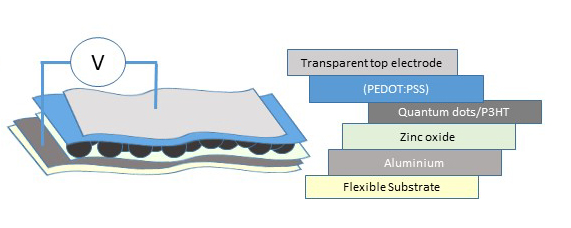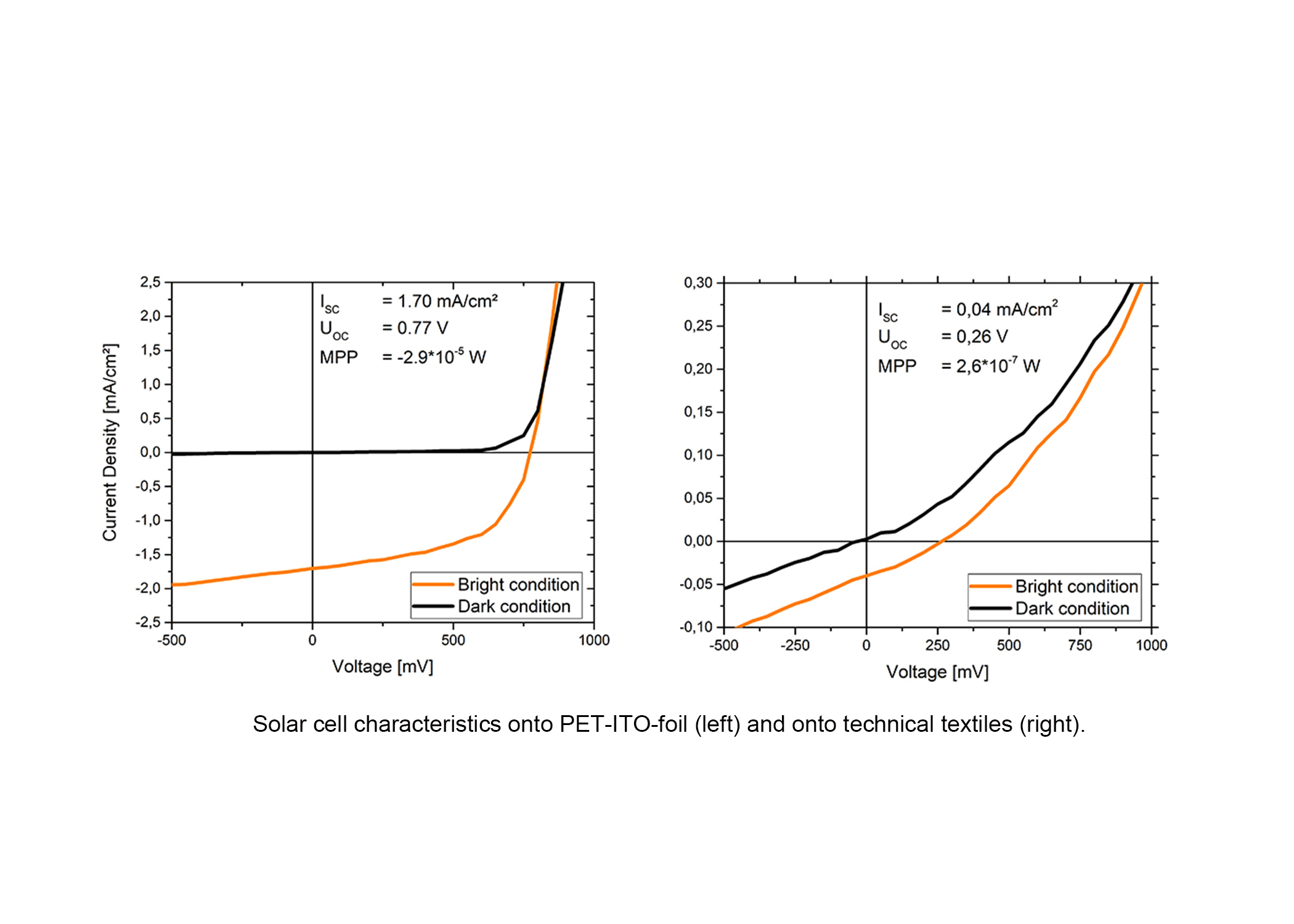Transfer of quantum dot-sensitized solar cells onto technical textiles


Today, silicon-based solar cells are widely used for energy harvesting in real life applications. Because of their high processing costs researchers are looking for alternative materials and solar cell systems. For a few years, nanomaterials like Quantum Dots are used as absorbing materials inside solar cell layer stacks. The absorption properties can be tuned by changing the quantum dot size and material composition. At Fraunhofer ENAS, quantum dot solar cells were realized onto technical textiles in the frame of the BMBF-project called »PhotoTex« in order to directly integrate an additional function. A hybrid quantum dot/polymer-based system was chosen which can be processed at low temperatures and which does not need a liquid polyelectrolyte. The solar cell layer stack consisted of: Transparent electrode/PEDOT:PSS/quantum dots-P3HT/zinc oxide/aluminium.
First solar cells were coated onto flexible PET-ITO-foils with efficiencies of up to 0.8 percent. To transfer these solar cells onto technical textiles, which were already covered with a silicon layer, some adaptions were necessary. The surface roughness had to be reduced further with parylene to prevent short-cuts inside the nanometer-sized layer stack. The swelling behavior of the PDMS-layer was also minimized with parylene. Due to the non-transparency of the textile, the chosen layer stack had to be inverted. Hence, the transparent electrode was deposited as a top electrode. At the left page the resulting layer stack configuration is shown which yielded a working solar cell on the technical textile.
 Fraunhofer Institute for Electronic Nano Systems
Fraunhofer Institute for Electronic Nano Systems